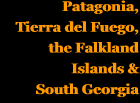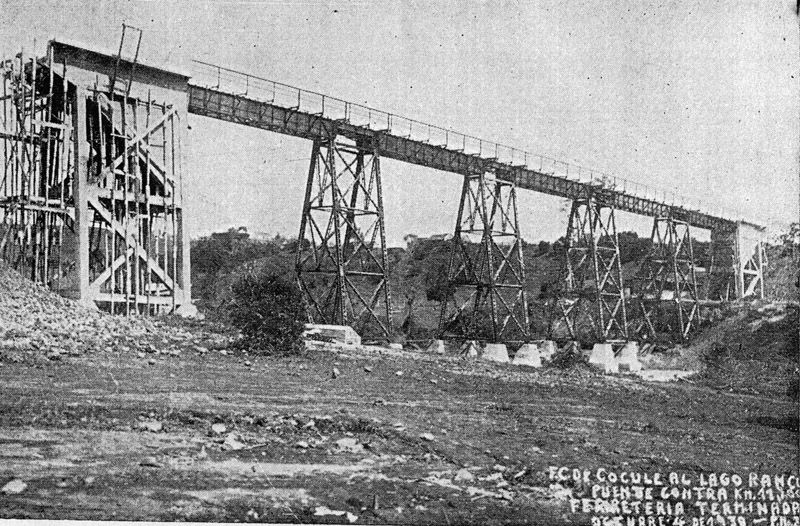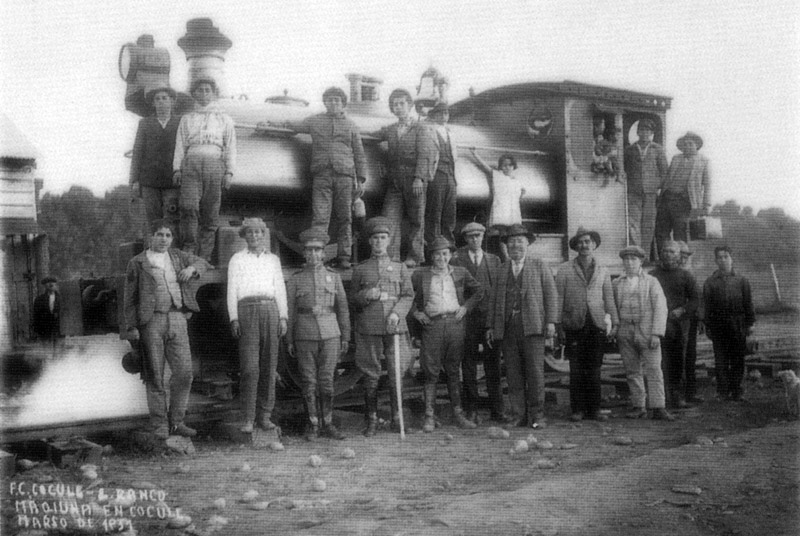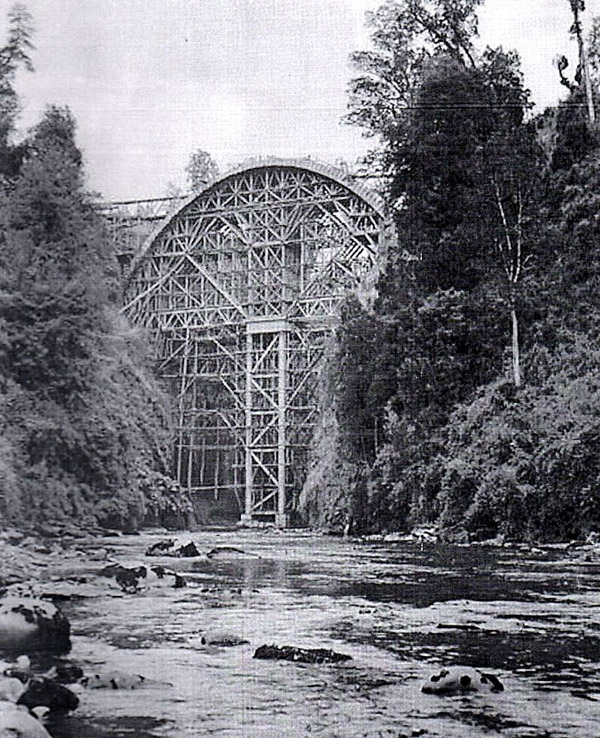 |
|||||||||||||
 |
|||||||||||||
 |
|||||||||||||
 |
|||||||||||||
Main pages
Appendices
4 Pichi-Ropulli Osorno report •
9 Branchline station photos 2 •
11 Barros Jarpa Noel agreement ª
Chapter 5
The south end of the Chilean broad gauge


The southern branch lines
The map below shows a number of branch railways diverging at various points from the southern mainline. It might be assumed that these had been constructed soon after the trunk route reached Puerto Montt in 1913, but whilst work on the independent metre gauge FC Trasandino a San Martín, covered in later pages, had been started in 1906, progress on the broad gauge feeder lines not only began late but was also long drawn out, the last section only being opened to traffic at the end of the 1950s. The five branches are covered here in order of commencement of construction.
La Unión via Río Bueno to Lago Ranco
Ing. Fernando Petit had suggested a branch to the town of Río Bueno as far back as 1905, to run along the south bank of the river of that name. The first intimation that the DOP was considering a line in this area came when surveys were undertaken four years later for a 60 cm. gauge line from La Unión station, eastward for 13.4 km. on the north side of the river to a point opposite the town.26 Ing. Rafael Edwards’ proposal would have started from the east side of the broad gauge station, running north and then around in a wide 180 degree curve to eventually join the public road heading south east. A paradero or halt at Duhalde after 4.3 km. would have been the only intermediate stop, after which the line would have continued on the south side of the road before diverging at km. 12 and dropping towards a Río Bueno station with two loops and a triangle on the bank of the river just opposite the town.
This proposal almost came to fruition, for tenders were invited and a contractor selected. Pressure was building from the town’s inhabitants, however, for a broad gauge line to be constructed from a junction at Cocule south of La Unión, and a petition was submitted in September 1910 in support of this: “The undersigned inhabitants of the department of Río Bueno, using the right of petition that the state constitution gives us, present [this petition] with due respect to Your Excellency: that a branch line, of the same gauge as the national mainline, is of the utmost necessity to unite the focal point of our department with the railway from La Unión to Puerto Montt.” (1).
There was resistance from the DOP, which considered that the traffic could not justify a broad gauge line costing 1,520,000 pesos when the 60 cm. gauge could be built for 320,000, but it would seem that the potential for agricultural and timber traffic from further east prompted a rethink, for the contract was put into abeyance and by 1912 a much longer broad gauge line was being considered.
Ingenieros Abel Munizaga and Isidro Dolares eventually surveyed the route from Cocule right through to Lago Ranco, 66 km. to the east, and a contract was awarded in 1928 to Barriga, Wachholtz y Alessandri, Cia. Ltda., with completion expected in forty-eight months (2). Construction began, using a palo mecánico or mechanical excavator for the cuttings and with reinforced concrete being used a good deal for culverts and for the abutments of the five span steel trestle at Puente Contra. In a further sign of Chile’s progress the steelwork was home fabricated, at Caleta Abarca near Viña del Mar.
However, the deteriorating world financial situation forced a halt to the works in 1931. They were eventually completed in November 1937, largely by the DOP’s own direct labour. Río Bueno, notably, eventually possessed two stations – Río Bueno Carga and Río Bueno Pasajeros – the latter added at the instigation of the populace as the original station was well east of the town (3).
The following photo shows the construction of the Puente Contra, west of Río Bueno town and on the south side of that river. Interestingly, the abutments have been built up from ground level on reinforced concrete legs, possibly to speed construction before the adjecane embankments had been completed or possibly as additional stabilisation in case of earthquake damage.

The contractor for the Lago Ranco line, Barriga, Wachholtz y Alessandri, Cia. Ltda., used at least one of the Hudswell Clarke 0-6-0STs originally purchased by S. Pearson & Sons when building new port works at Valparaiso. The precise identity of the loco is not known but it was probably one of Pearson’s no. 140 ‘MIRAMAR’, 141 ‘BARÓN’, or 144 ‘BELLAVISTA’ judging by the vertical stroke of the first letter on the name-plate just visble behind one of the men standing on the running plate. Certainly the first of these was used at this location.

Corte Alto to Fresia and Los Muermos
The majority of the southern branches head east from the mainline’s route along the western edge of the central valley, but of course south of Osorno the Puerto Montt line breaks away south-eastward toward Lago Llanquihue, so there it is the western side of the valley that needed a branch.
This was a rather more complex line to survey than might have been expected, with two separate drops down into intervening river valleys before a final decline to the Río Maullín where a new port for the crossing to Chiloé was to have been built at Lepihué. A later extension to Puerto Godoy or Puerto Abtao was anticipated.
The initial proposal was for a line beginning at Río Negro, but Corte Alto proved to be a better junction location. Several route variants were introduced for the sake of economy – between Corte Alto and Manzanar and around Río Frio – before a contract for the construction of the whole 108.4 km. was awarded in 1929; again to Barriga, Wachholtz y Alessandri, under the supervision of Ing. Rafael González. As in the case of the Lago Ranco line, work was halted for economic reasons in 1931. When construction restarted later that decade it was also largely by direct labour, with the line to Parga being opened in 1940, and then to Los Muermos after 1943. The remaining section down to and alongside the river, including stations at Canelos, Lolcura and Lepihué, was never completed.
The sub-ramal from Crucero to Puyehue
This sub-branch, although anticipated in the early Lago Ranco branch surveys around 1929, was completed only in 1954. It left the Lago Ranco route at Crucero and headed south-south-east to the shore of Lago Puyehue, to the settlement now known as Entrelagos. Whilst the lake is at a higher level than others, and thus there is no final descent to the water’s edge, alternative excitement was provided by the high bridges over deep narrow valleys. One of these, crossing the Río Chirre, did so by means of a single reinforced concrete arch around 100 m. in height – not much less than the famous Malleco viaduct which is Chile’s highest railway bridge.
The terminus, unlike those of most of the other branches, was not alongside the water but heading south-west away from it. This lends credence to the suggestion that this branch would eventually have been met end-on by the Rupanco line considered below, thus creating a loop (4).
The bridges on the sub-ramal to Puyehue were of reinforced concrete, and several crossed extremely deep gorges. This was the Chirre bridge under construction. It was the fracture of another of these bridges during the 1960 earthquake that forced the permanent closure of this line.

Osorno to Las Quemas, Rupanco and Puyehue
This ill-fated branch was strongly encouraged by the entrepreneur Teofilo Grob of La Unión in the 1930s. After some thought of directing it further south via Puerto Octay to rejoin the mainline, or even far to the south-east to Cochamó, in 1938 the original destination was resurrected, but it has been reported that it would have been extended to Puyehue as mentioned above.
Work seems to have begun in the late 1940s or the early ’50s. A short section opened to Las Quemas in 1954 but only for a brief period. The remainder of the route, including the stations at Pichil, Lo Blata, Pichi-Dama and Lago Rupanco, was never finished (5).
The junction with the mainline was created as a triangle, partly to enable trains to proceed directly to the new Osorno goods station and locomotive depot at Ovejería a couple of kilometres south of the original station. Around the same time the mainline through Osorno north of the passenger station was diverted to the west to remove the need to run through the town’s streets.
Lanco to Panguipulli
Early in the development of the railway network, the EFE had established estaciones sin rieles – stations without rails – at several important locations, through which traffic could be channelled to a railway station some distance away. Panguipulli was one of these, at the western end of the lake of that name, and through which came all manner of forestry products for onward transport to Lanco on the southern mainline.
This was another railway that had originally been proposed as a 60 cm. gauge line, in this case from Lanco to Quilche, 21.3 km., in 1919 by Ing. Victor Leon (6). Then came a scheme for a broad gauge electric railway, to follow the same route, onward to Lago Panguipulli and then along the shore and up into the mountains south-eastward to cross the international border along the same alignment as the earlier FC Trasandino por San Martín proposal, covered in the next chapter (8).
Nothing having come of either of these, in 1938 the DOP began surveys for a broad gauge branch as far as Panguipulli. The anticipated traffic was inevitably mostly timber, to a total of 1,500 tonnes per kilometre of track per year it was hoped.
This branch was the last to be completed in the south, and in fact the final few kilometres down the hill from Panguipulli Alto to the lakeside had only been open a few months when the 1960 earthquake struck.
Progressive closure of all southern branches
References
1 Correspondence, including the petition, is archived in ArNAd volume MOBR2309.
2 Memoria anual del Dirección General de Obras Públicas, 1930, p88, and FC de Cocule a Lago Ranco memoria final del DG de OP, 1937.
3 Río Bueno Pasajeros grew out of the halt or paradero Carlos Condell, but eventually gained a substantial-two storey station building and was therefore presumably manned.
4 Ian Thomson & Dietrich Angerstein, 1997, Historía del Ferrocarril en Chile, DiBAM, Santiago, p183.
5 Ferrocarril de Osorno al Lago Rupanco, estudio definitivo... 1943, DG de Obras Públicas.
6 Mentioned in FC de Lanco a Panguipulli report, 1941, in Biblioteca Nacional, Santiago.
7 Interview with Señor Florencio Pérez Castillo who started working for the EFE in 1955 and was latterly the Jefe de Estación at Los Lagos. In Ed. Rodrigo Obreque Echeverría, 2008, Gente de los Ríos, Secretaria Regional Ministerial de Gobierno del regíon de Los Ríos. Also available online at http://issuu.com/rodrigoobrequeecheverria/docs/gente_de_los_rios
8 Ibid, and 1947 report in ArNAd volume MOBR4705.
9-3-2018